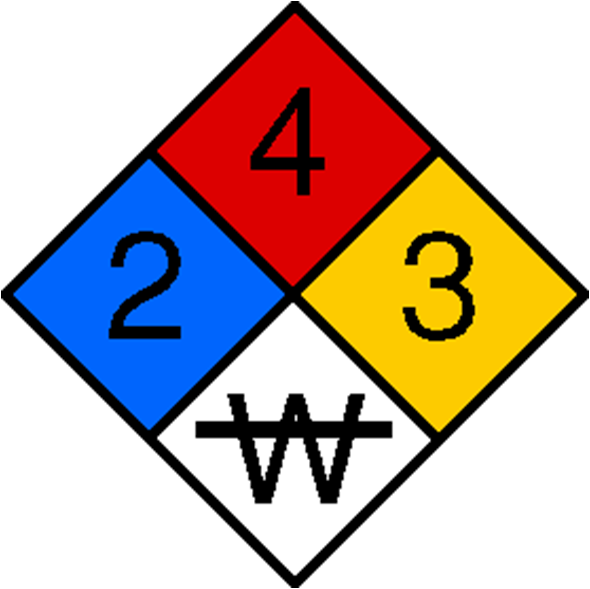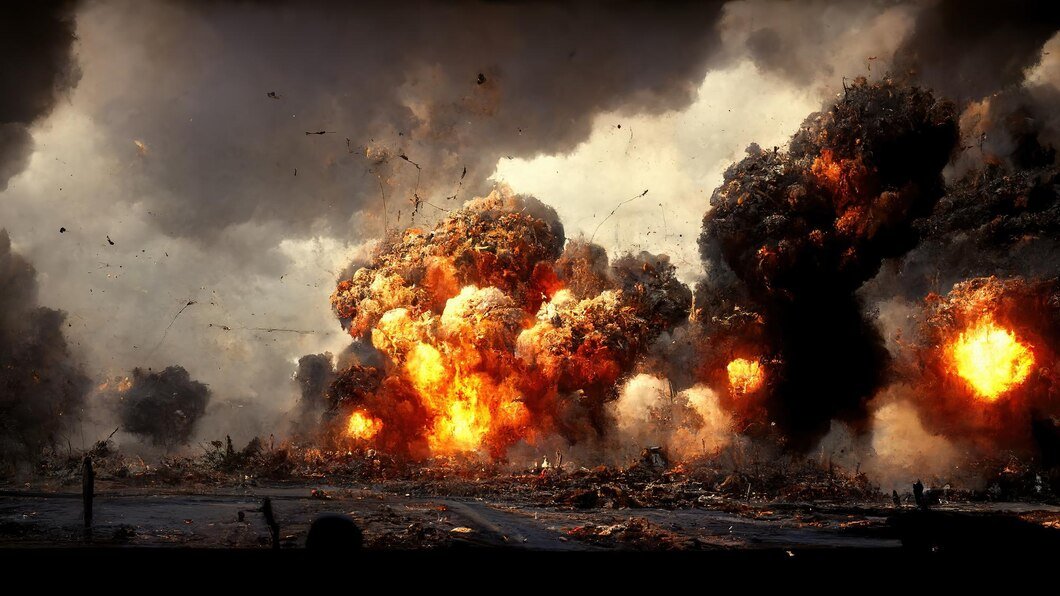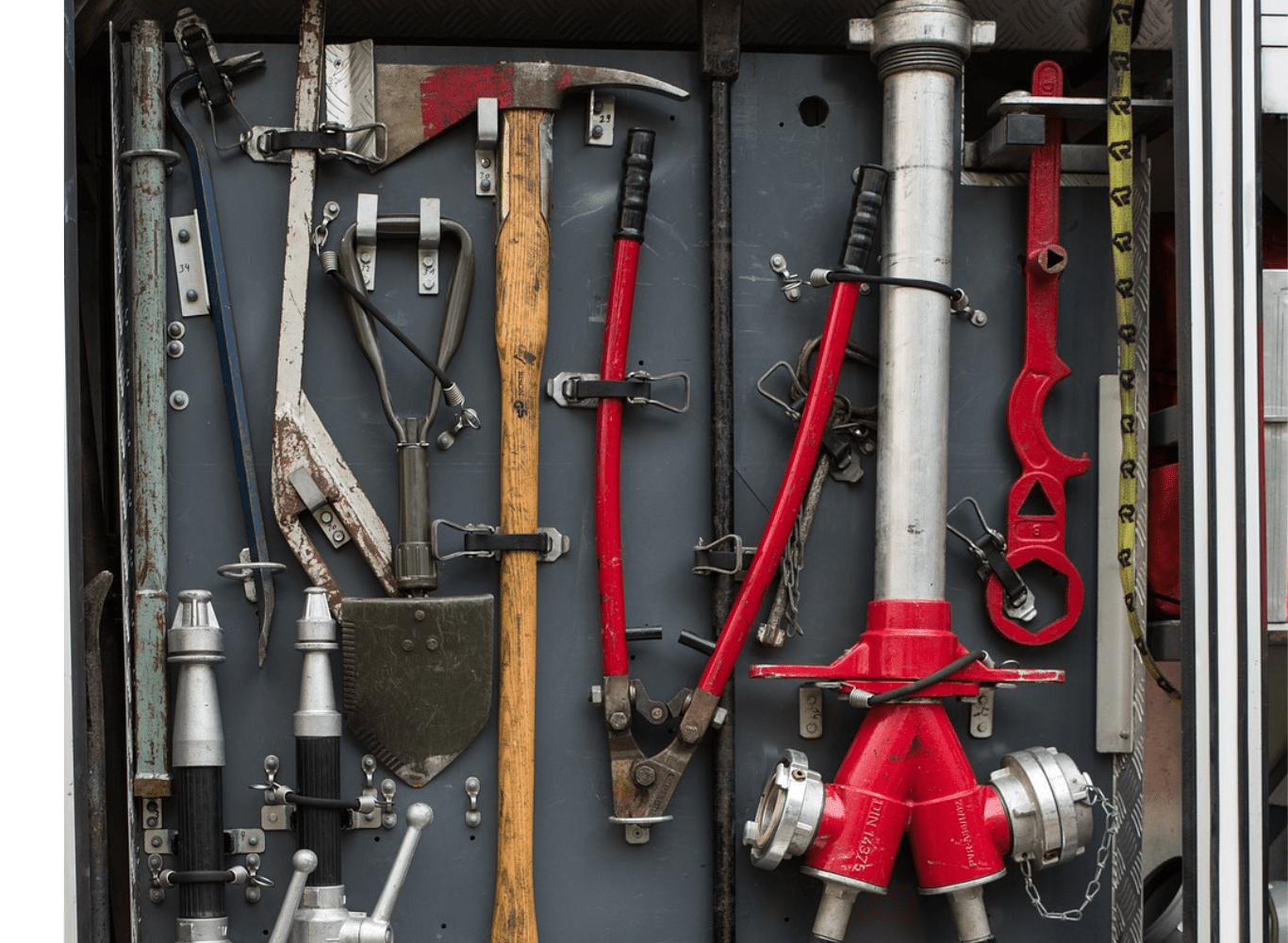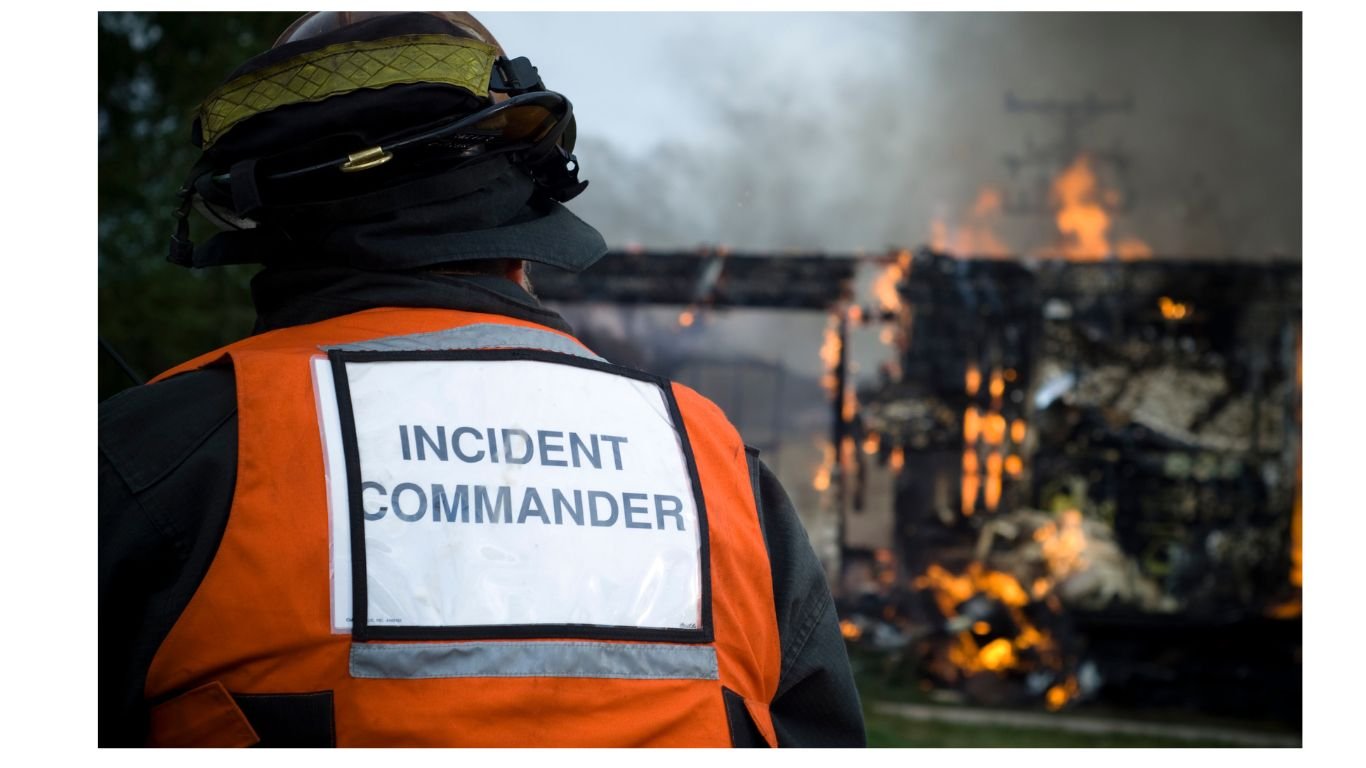Introduction
When most people hear the term “chemical fire,” their minds probably go to those terrifying images of billowing black smoke and towering flames. And while it’s true that chemical fires can be incredibly dangerous and destructive, it’s important to remember that they can also be extremely hazardous to your health.
In this comprehensive guide, we’ll take a look at everything you need to know about chemical fires. We’ll discuss what they are, how they occur, and the potential dangers they pose. We’ll also provide some tips on how to stay safe if you encounter a chemical fire. So if you’re interested in learning more about chemical fires, then read on!
What Is Chemical Fire?
That’s why it’s important to have a comprehensive understanding of chemical fires and the best way to handle them.
In this guide, we’ll cover everything you need to know about chemical fires. What are the different types of chemical fires? What are the dangers associated with them? How can you prevent them from happening? And most importantly, what should you do if a chemical fire breaks out?
What is Chemical?
In chemistry, a chemical substance is a shape of count that has consistent chemical composition and function properties. It can’t be separated into its additives via way of means of bodily separation methods, i.e. without breaking chemical bonds.
The term ‘Chemical Substance’ manner any natural or inorganic substance of a selected molecular identity, together with any mixture of such materials happening in entire or in component due to a chemical response or happening in nature.
Examples of chemical substances
Petro-chemical substances
A sub- elegance of chemical substances which can be derived from petroleum or herbal fuelling is referred to as petrochemicals.
Petrochemicals consist of ethylene, propylene, butadiene, benzene, toluene, xylem, and naphthalene. Which are used as uncooked cloth in the production of diverse merchandise? Plastics, soaps, detergents, drugs, fertilizers, insecticides rubbers, paints, epoxies, and so on are all petrochemicals.
Petrochemicals are made or recovered from a whole variety of petroleum fractions, however, the bulk of petrochemical merchandise is shaped from the lighter (C1–C4) hydrocarbon gases as uncooked materials.
Types of Chemical Fires
Chemical fires come in different types, each with its own dangers and means of extinguishing.
The most common type of chemical fire is called a class A fire. This involves burning materials like paper, wood, cloth, and plastic. Class A fires are extinguished with water.
Class B fires involve flammable liquids like gasoline, kerosene, and paint. They can be extinguished with foam or CO2 extinguishers.
Class C fires involve gasses like propane and methane. They can be extinguished with a CO2 extinguisher.
Class D fires involve metals like magnesium and titanium. They must be put out with a dry powder extinguisher.
The Dangers and Effects of Chemical Fire
When most people think of fire, they think of an open flame that can easily be extinguished with water. However, there is another kind of fire that is much more dangerous and difficult to put out: chemical fire.
Chemical fires can occur when different chemicals are mixed together, and they can result in very dangerous and explosive reactions. The flames from a chemical fire are often difficult to see, making them even more dangerous. And if that’s not bad enough, the fumes from a chemical fire can be toxic and even fatal.
So what should you do if you encounter a chemical fire? The best thing to do is get away from the fire and calls the fire department. Do not try to put out the fire yourself.
Safety Protocols for Chemical Fire Hazards
It is important to be aware of the safety protocols when it comes to chemical fire hazards. To begin, always wear the proper protective gear such as safety glasses, a respirator, and flame-resistant clothing. If you are working with chemicals, add protective gloves and a face shield (if needed) to your personal protective equipment (PPE).
Ensure that you have an ample supply of water and other fire-suppressing materials on-hand, such as baking soda or sand. Also be sure to have a dry chemical fire extinguisher nearby, in case of an emergency. If the fire is created from flammable liquids, like oil or gasoline, use foam-based agents to suppress the flames. Be sure you know how to operate any fire suppressant equipment and read all safety instructions carefully before use.
Also keep in mind that chemical fires may produce noxious fumes that can be dangerous if inhaled, so be sure to evacuate any nearby areas as soon as possible in order to prevent injury or illness. If you are unable to safely put out the fire yourself. Call the local emergency fire department. Taking proper precautions and following standard safety protocols will drastically reduce your risk of experiencing a serious accident.
First-Response to a Chemical Fire
When dealing with chemical fire, you need to take certain first-response measures even before the fire department arrives. First, you absolutely must evacuate the premises as soon as possible. Then, you need to make sure that any nearby flammable materials are either moved or extinguished. You should also close any windows and doors to contain the blaze.
The final step is to try and identify the source of the fire it could be a hazardous chemical, or an electrical fault, or any other number of things. Knowing what is causing the fire will help responders determine the most effective and safest way to put it out. Of course, you should never attempt to put out a chemical fire on your own.
Fire Prevention and Protection Methods against Chemical Fires
When it comes to chemical fire prevention and protection methods, the best thing you can do is be vigilant and prepared. Keep a dry chemical fire extinguisher handy at all times, as well as coveralls, a helmet, and any other protective clothing necessary to shield yourself from the intense heat of a chemical fire.
Prior to handling any hazardous chemicals or materials, verify that safety regulations are in place and that all personnel has received proper training in safe handling procedures. Additionally, ensure that all safety equipment is installed and functioning properly.
It is also important to create an emergency response plan in the event of a chemical fire. You should know the exact steps to take if a fire breaks out, including what equipment is necessary, how to safely extinguish the flames using chemical absorbents, foam, or water sprays, as well as evacuation routes and assembly points for personnel.
By taking these proactive steps beforehand, you will put yourself in a much better position should a chemical fire occur on your property.
The Components of Material Safety Data Sheet
What is The Material Safety Data Sheet
It is a sheet that contains all the basic information such as physical and chemical properties, extinguishing medium, precautions, etc about the chemicals.
When it comes to chemical fire, it is important to understand the components of the Material Safety Data Sheet. Your local fire department can provide you with an MSDS for the chemicals in your store or workplace.
The MSDS contains information about the chemical characteristics, flammable hazards, health hazards, hazardous ingredients, and other safety measures that should be taken when dealing with a particular chemical fire. It also includes instructions on how to recognize and respond to a potential chemical fire. For example, it will tell you what type of helmet or facial protection is needed in the event of a fire and what kind of respirator is necessary.
Furthermore, the MSDS includes instructions on the proper handling, storage, transportation, and disposal of hazardous chemicals. This information is essential for keeping employees safe and avoiding any kind of environmental contamination.
In addition to this information about hazardous chemicals, the MSDS also contains relevant safety data and recommended safety precautions for each product. Paying attention to these details on the Material Safety Data Sheet can save your business from costly accidents or disasters caused by improper use of hazardous materials.
Firefighters must obtain this document from concerned persons before starting firefighting. Water must not be used on chemical, petrochemical, and petroleum products fire. MSDS must be pasted at prominent places in all the working facilities.
Components of MSDS
The following are the components of MSDS.
- Name of Chemicals.
- Physical Properties of Chemicals.
- Chemicals Properties of Chemical.
- Precautions of Chemicals.
- The temperature of Reaction.
- Extinguishing Medians.
Reactive Chemicals and Water Reactive Chemicals
Reactive Chemicals
Chemical fires can be caused by reactive chemicals, which become explosive when exposed to air, heat, or friction. Reactive chemicals are also known as unstable and are typically stored in hermetically sealed containers as a safety precaution.
Water Reactive Chemicals
Water-reactive chemicals are a type of reactive chemical that reacts violently with water. In other words, if you were to spray water on the fire, it would actually make the fire worse due to this reaction. It’s important to note that water can be used to put out the flames from certain types of chemical fires (such as class B fires), but not all of them.
The most common water-reactive chemical is Sodium Aside (NaN3), which is a common preservative used in laboratories and medical facilities. It is also found in some automotive batteries and fuel tanks, so it is important to be aware of the presence of this hazardous chemical wherever it may be located.
Phosgene and Phosphate are both toxic gases that are produced by water-reactive Chemicals. The chemical formula of phosgene Gas is COCL2 and of Phosphate Gas is PH3.
Examples of water-reactive chemicals are Alkali Metals like Sodium, Magnesium, and Potassium.
Importance of Labeling
Understanding the labeling of whichever chemical you’re using is always important. A sound labeling system can help reduce hazardous material incidents, as well as identify and interpret warning signs that could prevent injury.
For instance, labels can be used to communicate information about the potential risks related to chemicals, including flammability, explosiveness, and health hazards. Labels also list recommendations for handling, storage, and disposal of hazardous materials. So it’s always best to adhere to those instructions!
Lastly, labels might provide information about the concentration of specific chemicals present in each product. This can be particularly valuable when determining the appropriate protective gear to wear or what safety measures are necessary before handling a particular chemical. So it’s important to take note of these details and be mindful when working with any potentially dangerous substances!
Labels are concise communications that take the shape of signs and symbols. They expound on and describe key properties of the materials.
Labels may contain details about:
- Flammability
- Toxicity
- Storage and Handling Instructions
- The expiration or production date
- Precautions
- Chemical equations
- Signs
- Logos, etc
Different Types of Labels

What is NFPA Diamond, Importance and use of NFPA Diamond
When it comes to understanding chemical fire, you need to be familiar with the NFPA Diamond and how it works. The NFPA Diamond is an acronym for the National Fire Protection Association, and it is used to indicate the health, flammability, instability, and related hazards of a particular substance.
The diamond is divided into four sections; each one corresponds to one of the four hazards and provides you with an immediate visual of the hazard at hand.
The health hazards are represented by the blue square on the diamond, which displays the toxicity information.
The flammability hazards are indicated by the red triangle, which tells you how likely a particular material is to ignite or contribute fuel to a fire.
The instability or reactivity hazards are shown in yellow, indicating any issues related to whether or not a material might detonate or react violently in certain conditions.
Special warnings regarding specific hazards are displayed in white, providing additional information that can help you when assessing any given situation.
NFPA Diamond –
used by fire/rescue personnel

Importance and Uses
The NFPA Diamond is an essential tool for anyone who wants to stay safe around hazardous materials and understand how various chemicals react under various conditions. Knowing what these symbols mean can make all the difference when it comes to avoiding dangerous situations involving chemical fire.
The NFPA Diamond is utilized to evaluate the risks posed by particular chemicals and to take all necessary safety measures and PPE when handling those chemicals in order to protect against those risks.
To designate or classify the number of threats caused by the chemicals, NFPA Diamond uses color coding for various categories of hazards on a scale from 0 to 4.
NFPA Diamond rates the dangers that various chemicals pose on a scale of 0 to 4. These valves for health hazards, for instance, might be present on a chemical’s 0–4 scale.
- 4 Too dangerous to enter vapor or liquid.
- 3 Extremely risky use of complete PPE.
- 2 Use breathing equipment; hazardous.
- 1 Slightly dangerous
- 0 No risk or ordinary material
Conclusion
Chemical fire is a serious hazard that can cause extensive damage to property and pose a serious threat to human life. It is important to be aware of the dangers of chemical fire and take steps to protect yourself and your property.



